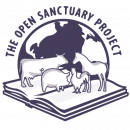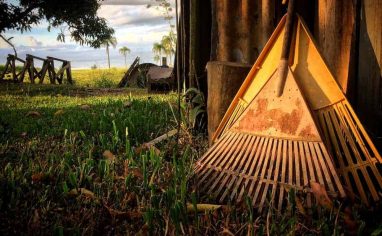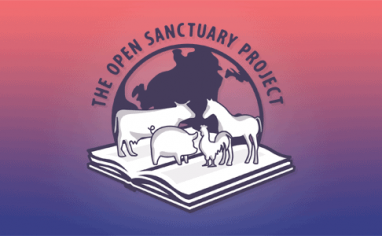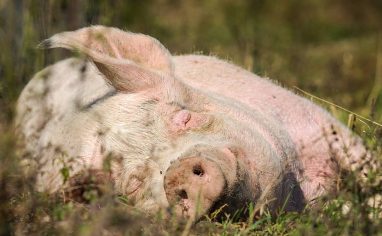
Subscribe To The Open Sanctuary Podcast
If you’d like to get the latest episodes of The Open Sanctuary Podcast, you can subscribe for free on all Podcast platforms, including Apple Podcasts and Spotify!
Episode Notes
The Open Sanctuary Project’s Community Education Specialist, Andie, and NonprofitA non-governmental organization whose primary purpose is something other than selling goods or services. Specialist, Julia, offer an introduction to The Open Sanctuary Project’s offerings in our education and governance departments! Did you know that in addition to our direct care resources, we also have a vast array of resources on these two essential subjects for animal organizations? We talk about the many areas we cover and how the subjects of governance, education, and advocacy interplay with one another!
—
This Episode’s Referenced Open Sanctuary Project Resources:
- Strategic Planning for Educational Programming at Your Animal Sanctuary | The Open Sanctuary Project
- Education Program Evaluation for Animal Sanctuaries | The Open Sanctuary Project
- A Guide Fostering Farmed Animal Agency in Sanctuary Education | The Open Sanctuary Project
- Adaptable Elementary- and Middle School-Age Sanctuary Education Lesson Plans | The Open Sanctuary Project
- Fostering Empathy Towards Farmed Animals | The Open Sanctuary Project
- Fostering Critical Thinking at Your Animal Sanctuary | The Open Sanctuary Project
- Understanding Biases that Can Negatively Impact Farmed Animals and How to Help Folks Overcome Them | The Open Sanctuary Project
- Accessibility for Deaf and Hard of Hearing Community Members at Your Animal Sanctuary | The Open Sanctuary Project
- Accessibility for Blind and Visually Disabled Community Members at Your Animal Sanctuary | The Open Sanctuary Project
- Accessibility for Folks with Physical Disabilities at Your Animal Sanctuary | The Open Sanctuary Project
- Crafting an Accident Waiver for Your Animal Sanctuary | The Open Sanctuary Project
- The Open Sanctuary Project’s Volunteer Policy Handbook | The Open Sanctuary Project
- A Guide to Effective Tabling at Your Animal Sanctuary | The Open Sanctuary Project
- A Suggested Governance Curriculum For Your Animal Organization | The Open Sanctuary Project
- The Open Sanctuary Project’s Board Resources For Animal Organizations | The Open Sanctuary Project
- Breaking Down An Independent Contractor Agreement For Your Animal Sanctuary | The Open Sanctuary Project
- The Open Sanctuary Project’s Resources On Volunteer And Worker Considerations | The Open Sanctuary Project
- Understanding Your Animal Sanctuary’s Zoning Rights And Restrictions | The Open Sanctuary Project
- What Is A Land Survey And How Can It Help Your Animal Organization? | The Open Sanctuary Project
- Understanding Legal Mechanisms For Conflict Resolution For Your Animal Organization | The Open Sanctuary Project
- Conflict Support For Your Animal Organization: Understanding Dominant Culture, How It Shapes Our Behaviors And Envisioning Alternatives | The Open Sanctuary Project
- Conflict Support For Your Animal Organization: Part 2 Building Transformative Relationships: Tools for Challenging Dominant Culture in Everyday Interactions | The Open Sanctuary Project
- Accuracy And Transparency: Two Critical Responsibilities Of Your Farmed Animal Sanctuary | The Open Sanctuary Project
Episode Transcript (Auto-GeneratedThe following content was transcribed through an automated process and may contain transcription errors or misspellings.)
Andie Springirth: Well, hello there friends and welcome to another episode of the Open Sanctuary Podcast. I’m Andy, the community education specialist, and I’m here chatting with Julia, our nonprofit specialist. Today, we are excited to offer you an introduction to two specific areas of our library of resources, our education department and our organizational governance department. The Open Sanctuary Project is probably best known for our offerings on the direct care of animals, but we also have so much more to share with our community. In fact, while our staff all have direct care experience, are caregivers and work on direct care offerings for the OSP, the two of us, Julia and I focus on resource creation specifically to do with sanctuary education and sanctuary governance. So, in this episode, we want to offer you an introduction to our backgrounds, what we’ve created for you, how it can help you, and also explain a bit about the overlap between our two realms. So, do we want to get started with education?
Julia Magnus: Let’s do it. Let’s do it. Okay. So, tell me, tell me why do we have an education department?
Andie Springirth: Ooh, what a great question. Well, as many of our listeners probably know, education often becomes a very important part of a sanctuary’s missionThe stated goals and activities of an organization. An animal sanctuary’s mission is commonly focused on objectives such as animal rescue and public advocacy.. Whether that be more formal education programs like guided on-site educational visits, oftentimes called tours, or things like in-person workshops and classes or slightly less formal programs like educational social media series or even educational community outreachAn activity or campaign to share information with the public or a specific group. Typically used in reference to an organization’s efforts to share their mission. campaigns that endeavor to do things like raise awareness about a particular issue that affects farm animalsDomesticated animals that are used by humans either for their body or what comes from their body. Farmed animals have fewer regulations governing their welfare than other species in many countries.. But regardless of the specific type of educational programming, folks in the sanctuary community are frequently drawn into sanctuary work to not only provide lifelong compassionate care to farmed animalsA species or specific breed of animal that is raised by humans for the use of their bodies or what comes from their bodies., but to advocate for them and educate others on their behalf as well. So this essentially is why we have an education department at the OSP that’s dedicated to providing sanctuary folks with practical, actionable resources that empower them to educate their communities in various ways about the issues that farmed animals face and of course call them to action as effectively and successfully as possible. I have enjoyed so much all the resources that you’ve generated on these subjects and I would love to hear some highlights that you’d like to share about.
Andie Springirth: Yeah, absolutely. Julia and I, prior to this recording, were actually just having a conversation about the overlap between things like advocacy, education, and outreach and how those all kind of go hand-in-hand. So, this department is continually evolving, but essentially our resources at the OSP that are devoted to sanctuary education can be broken down into about five categories: Education program planning, program evaluation, program practices, prepackaged programs, and what I call foundational concepts or foundational learning for sanctuary educators. So, to give our listeners some concrete examples of those different categories, we have an entire resource dedicated to helping folks create a strategic plan or a roadmap essentially for their sanctuary’s educational programming that enables them to identify their specific educational goals and then the specific ways they’re going to achieve those goals. We also have incredibly comprehensive resources on sanctuary education program evaluation. Shout out to that basically course of a resource that I wrote a few years ago. And resources on specific practices like the lovely booklet we released earlier this year on how to foster farmed animalA species or specific breed of animal that is raised by humans for the use of their bodies or what comes from their bodies. agency in sanctuary education. We have adaptable elementary and middle school lesson plans. These are those prepackaged programs that I was mentioning earlier. These are aligned with the Common Core competencies and other nationally recognized learning standards. This is to help sanctuary education and programs and educators attract more local schools to their learning spaces as well as resources that go into a lot of detail about foundational concepts like empathy, critical thinking, bias, etc., that are really, really important to understand as they facilitate their programs. We offer a lot of resources related to community education outreach, but those are just a few.
Julia Magnus: Yeah, I have to definitely underline that agency guide that you referenced. And also, I want to give a little shout out to one of your prepackaged lesson plans, which is I really love the chick hatching alternative, which is such a lovely way that the world of education aligns with advocacy because you are doing education and at the same time changing policies in schools that are exploitative of animals. So, those are just I love that one. I just it’s beautiful and it does so many things at once.
Andie Springirth: Thank you, Julia. I really appreciate that. And I do just want to say, too, with regards to that specific lesson plan, that’s adaptable anywhere. I mean, that’s something that you can print out and facilitate on site, offsite, in a home, at a library, very adaptable and accessible, I feel like, in a lot of different learning spaces. But to shift things over a little bit to Julia’s realm, Julia, I would love to hear a little bit, if you don’t mind, about why the OSP has a governance department.
Julia Magnus: I don’t mind at all. And the fact of the matter is many, many folks who get into the direct care of animals may not have experience with creating or running an organization. Their hearts, minds, blood, sweat, and tears are usually very, very tied into the work, the day-to-day work of direct care. So whether you are working one-on-one with animals or you are working within a grassroots organizational context or you are starting or working within a formally organized nonprofit, you’re going to need to know stuff about governance. And it’s not always the easiest information to learn because oftentimes it’s couched in legalese that’s unapproachable, puts you to sleep, especially after a long day of caregiving tasks. But you still have to know it. And as a matter of fact, one of the most common questions that we get at OSP is, “I want to start a nonprofit/sanctuary/rescue,” any one of the three or all, “How do I do this?” So I would say that’s at least once a week. So we do have a whole series of basics on that, including a meta resource or a curriculum of all our nonprofit basics that can kind of help guide you along the way. No matter the format of your organization, whether you want to be grassroots, micro, nonprofit, examples of the kinds of things that we cover in our resources include things that involve questions around land like zoning, which is something that you should absolutely 100% think about before you consider siting a rescue or a sanctuary on a particular piece of land. We also have materials on the questions of managing liabilities and also one of our very favorites, the resources on conflict support.
Andie Springirth: Yeah, resources. It’s an entire beautiful series and I just have to say, Julia, that the depth of information that you provide the sanctuary community in all of your resources on organizational governance, they’re really nothing short of extraordinary. For all of our listeners, if you haven’t checked these out, I hope you have. Please do. There are no other resources like them out there in the world. So, thank you, Julia, for sharing a bit about them with us. And I’m actually wondering if there are any other resource examples that you would like to highlight for us that may be some of your favorites.
Julia Magnus: For sure. And I want to say that we’ve had a great deal of help from experts in various different fields. I happen to be a lawyer, but we’ve also had help from Peggy Cusack, who is one of our lovely board members. She’s also an attorney. She has done a lot of work on specifically board resources. These resources include things like downloadable templates for board bylaws, job descriptions for board members, and more. They explain the roles of your board, and how to run a board. It’s really, really helpful stuff that you’re absolutely going to need to know and it is put in terms that are understandable and accessible. Those values are really important to us. I do want to point out that just as a general guiding document for our governance resources, we did put out the curriculum which kind of puts things in the order that you might encounter them as you’re starting your organization. I think that one’s really helpful as kind of a framework to approach these resources. I think the first resource I ever did for OSP was a resource on independent contractor agreements. So, that was meant to help you when you’re navigating negotiating contracts. Everyone says stuff about boilerplate language in contracts, but that language is operative and important to understand. So, we break down some of the typical language you might see in a contract bit by bit. And we also offer you templates that you can use going forward. Also important, we have resources on worker and volunteer considerations that help you make sure that you’re operating within legal requirements and can help you with some tools to help prevent and navigate conflict. And as we mentioned before, we love those conflict support resources and we’ll talk a little more about those later. So, depending on our listeners’ experience in the sanctuary realm, it may or may not come as a surprise that our two departments actually share a lot of areas of overlap. And I think as another way to highlight what it is that we both do individually and collectively at the OSP, that it would be helpful for us to share about some of those areas. So, one of the ones both Julia and I know are very passionate about is shared values when it comes to accessibility. So, in terms of education specifically, one of the wonderful aspirations of most animal sanctuary educators is the desire to create and nurture spaces that are safe, inclusive, and kind for everyone. And when we’re creating these spaces, we’re really exploring how to nurture more safe, kind, inclusive thoughts and behaviors for others and ourselves as well as more safe physical spaces. So, one of the ongoing educational series that we have at the OSP is how sanctuaries and specifically sanctuary educators and representatives can nurture and create spaces that are safe, welcoming, inclusive of, and accessible to members of the community with disabilities. So, currently on our website, the OSP has three very comprehensive resources on how to create spaces that are accessible to deaf and hard of hearing community members who visit and work in a sanctuary setting as well as to blind and visually disabled community members and as well as folks with physical disabilities who visit and work in a sanctuary setting. And so our hope with this series is that sanctuary folks will gain a better understanding of some of the best practices, accommodations, and principles that they can integrate into their own spaces and educational programming to make their sanctuaries as safe, welcoming, and accessible as possible to as many people as possible. And again to kind of echo what Julia was saying in terms of convening with experts outside of the OSP, this series is really written in collaboration with folks from the sanctuary community with lived experiences in these various realms of disability and accessibility. So just a quick shout out here to the folks who have contributed their experience and their expertise and guidance in this area because it really does and has made this resource series in particular stronger. But Julia, in terms of sanctuary governance, I’m wondering in what ways you strive to make your resources and guidance as accessible as possible for the sanctuary community because as you mentioned earlier, that term legalese makes me tighten up a little bit.
Julia Magnus: Yep. Yep. It’s definitely difficult. I mean, when you start a nonprofit, basically you are faced with the instructions to a Form 1023, which is your application for tax exemption. And you’re supposed to navigate this at the same time that you’re getting your state nonprofit status. And juggling those things is complex and hard. And of course, the IRS makes it so easy in their instructions to figure out what you’re supposed to put where. But if you do mess up these things, there are pretty significant consequences. So, it’s really important that folks have access to information that is understandable and it doesn’t put them to sleep. So, that is what we try to do as much as possible with our governance stuff. We try to make it just easy to read step by step like that independent contractor one. Every clause that you might encounter in a contract is put out there for you and then a common sense language version is offered. So you’re like, “Oh, okay. That’s what that means.” And for me in that context, it feels particularly important because there are plenty of people who will be like, “Oh, this looks like boilerplate. It doesn’t mean anything.” Well, it’s there for a reason. You should probably know what it means before you put your name on it. I also just want to circle back quickly and say I particularly love the resources you’ve created on accessibility with regard to disabled community members. It’s really important to me. One thing that I’ve been working on endlessly at this point, but it’s a project in the works which I think will be coming out in the coming months soon. It’s something dear to my heart. The question of accessibility of sanctuary spaces to people of the global majority, which is a tricky, tricky, tricky question and we’re trying to do the best we can to consolidate what information we have about this issue and present it to the sanctuary community so that we can try to overcome the challenges to creating accessible spaces together with full information.
Andie Springirth: Yeah, that’s a resource series I hope everybody bookmarks here because it’s going to be incredibly impactful. So, another area of overlap you mentioned briefly earlier is managing liability. And in terms of sanctuary education specifically, you know, the topic of liability typically comes into play when sanctuaries open up their spaces to the public for on-site community education and outreach events. So, it’s vital that sanctuary staff and volunteers are able to anticipate and avoid as many potential liabilities as possible. So, what kinds of liabilities are we talking about from an educational perspective? This can be from potential direct liabilities that come from potential direct and indirect interaction with residents to other safety liabilities like visitors navigating tough terrain, on-site equipment, moving vehicles, etc. You know, there are a lot of important factors to consider in order to make sure these experiences are as safe and enjoyable as possible for everyone, both human and non-human. So, to give you another specific example of one of our resources that addresses this, our guide again to Fostering Agency in farmed animals for sanctuary educators has an entire section along with supplemental materials for educators related to conducting safe, consensual interactions between residents and on-site visitors. We also have resources on what to consider when children visit your sanctuary as well as how to craft an accident waiver for visitors. And Julia, please correct me if I’m misquoting here. I believe the accident waiver is our most downloaded resource on our website.
Julia Magnus: It’s 100% the most downloaded thing on our site.
Andie Springirth: But our accessibility series is also a great place to learn about and avoid many other kinds of potential liabilities. And in terms of organizational governance, Julia, I know you have a lot to share with our community regarding this particular topic. So, would you mind telling us a bit more about how you approach the topic of managing liability and some of your resources?
Julia Magnus: Sure. Yeah. When it comes to many issues to do with law and governance, there are legal consequences that you will face if things go awry. There are consequences to your actions and your decisions. So, what we try to do is provide you with tools that you can use so you can anticipate and avoid any potential liabilities and if you encounter them have ways to manage them. So, if we look at a couple examples, let’s go back to land for a minute. With land issues, you could run into issues with respect to zoning. If you have not done sufficient research on what you are and are not allowed to do on your land, then you might run into trouble with local governance. If you have uses on your land that are not allowed, you might also have issues with boundaries and neighbor disputes. There are ways that you can deal with that as well. With respect to the zoning issue, we have a full resource on zoning that’s really helpful, teaches you all about the things that you have to keep in mind when it comes to what you can and cannot do on your land. And when it comes to land issues, we also have a resource that is meant to introduce you to land surveys. Land surveys are one of the most important ways to get all the information you need about your land and best understand what you can and cannot do on your property. Let’s think about another form of liability you might encounter, which is conflicts. Unavoidable, inevitable. They’re just part of life. You’re going to encounter conflict in one way, shape, or form. And especially if you’re engaged in high-intensity and high-pressure work, which most of us in sanctuary are. So, the legal system may be what you need to resort to at some times when you have to deal with conflicts. And we do have a huge, huge resource that explains how not only the common law system in the states works but also the civil code in countries that operate under that rubric. But I also want to point out that liability is not just about, “Okay, now we have a problem, let’s deal with it.” It’s about anticipating problems before they happen and creating a culture which is supportive and in which when a conflict is brewing, you might be able to head it off at the pass. So we worked with a transformative justice expert who has two resources in a series and actually that third one is coming out soon, too. These resources offer tips on how to work through conflict in a way that can help prevent it from escalating to a level at which the legal system is needed. Another area of overlap that Julia and I have brought our brains together on at various times in our work is when we address accuracy and transparency in our resources. So, part of the role of the sanctuary educator is to help folks who visit their learning spaces think critically about farmed animals and all the issues that they face. But in order to effectively guide people through this critical thinking process and get them to a place where they can really safely question their assumptions about farmed animals and consider alternative perspectives and then hopefully take informed action that benefits the well-being of farmed animals, right? We have to provide information that is as accurate and responsible as possible. Not doing so risks the integrity of not only our own individual organizations but of the sanctuary community and the animal liberationA social movement dedicated to the freeing of nonhuman animals from exploitation and harm caused by humans. movement as a whole.
Julia Magnus: Yeah, those are also critical values when it comes to governance as you might imagine. I mean, when it comes to presenting basic information about your organization to the public, it’s very important that you be very clear about what you are, whether you’re a nonprofit, whether you’re not. If you are doing fundraising, obviously, being accurate and transparent are critical. Otherwise, you might have a visit from nobody’s friend, the IRS. Everybody wants to avoid that. So, it’s absolutely critical that you be as accurate and transparent as possible when it comes to accounting, recordkeeping decisions, administrative work that you do that might come under scrutiny. It’s absolutely a critical part of ethical, sustainable, and legal sanctuary operation. Both of us have done work on that resource which is in the governance pile on the OSP site, but it is called “Accuracy and Transparency at Your Animal Organization.” So, I was fiddling around with governance stuff in there and you were fiddling around with educational and we’re like, “Yes, our powers combined.”
Andie Springirth: Oh, we’ve got one more area, haven’t we? So, why don’t we talk about outreach? Is this fair to say that it’s probably the most clear area of overlap between education and governance?
Julia Magnus: Yes, I agree.
Andie Springirth: Yeah. So, when it comes to volunteers in addition to making sure that they have a great experience at your sanctuary, you’re again, as we mentioned above and we’ll continue to mention because it’s important. Obviously, you all think so, too. Since you download our accident waiver so much, you got to manage your liabilities with visitors, with volunteers. And I would also say that outreach from a governance lens includes things like organizational activities like fundraising, tabling, doing more direct advocacy work. So if you have an issue locally, say somebody’s trying to put a rooster ban in place, this is where this kind of outreach, education, governance question folds into one giant blob.
Julia Magnus: Yeah. So if you’re soliciting support from your community on a particular outreach mission, you’re simultaneously going to be educating folks as to your mission, vision, and how your work is meant to accomplish those.
Andie Springirth: Right. So, sanctuary, governance, and education have a lot of overlapping circles, which is one reason why Julia and I collaborate together on several resources at the OSP. And really, all of our departments overlap in various ways. And I think that’s true for work at sanctuaries as well, or at least I think should be in my opinion. All of our respective work informs the other, and it’s much, much stronger as a result. So friends, we hope that our introduction to the Open Sanctuary Project’s education and governance departments has been useful and that our offerings in these realms are helpful to you. If there are more subjects in these areas that could be useful to you, please feel free to contact us via our contact us page at opensanctuary.org. We’re always happy to hear community feedback and welcome suggestions for new resources. And again, we’ve put a list of the resources that we referred to in this podcast into our show notes and you can find them at opensanctuary.org. As always, we welcome your feedback and if you found this information valuable, please consider leaving a five-star review. And if you like what we do and would like to support our work, we warmly welcome donations. We are a 501c3 organization, so your donations are entirely tax-deductible and they help us sustain our mission of providing freely accessible resources so that every sanctuary story can be a success story. So, Julia, thank you so much for having me and for joining me on today’s episode. And friends out there, thank you for listening, for your support, and we look forward to talking to you next time. Take care. Bye-bye.
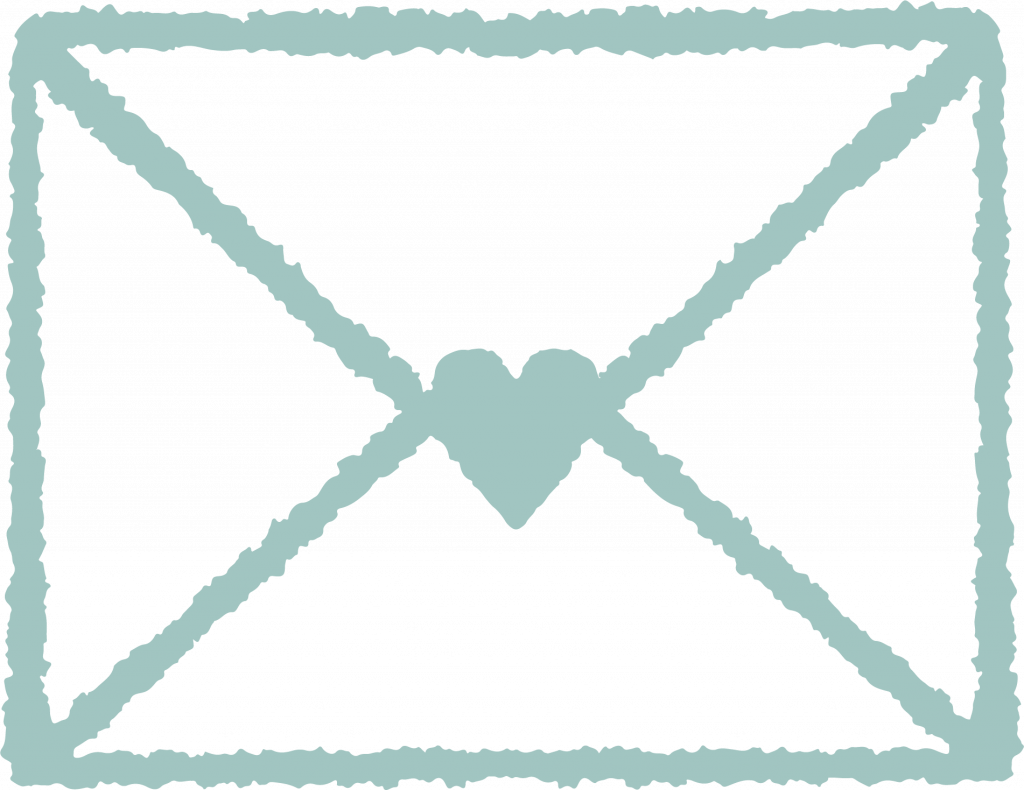
Got A Podcast Idea? Contact Us!
If you have a topic or question you’d love to hear our staff address on The Open Sanctuary Podcast, please get in touch via our contact form!


